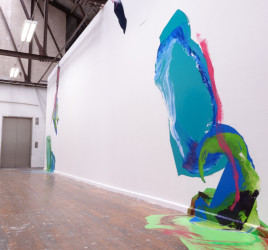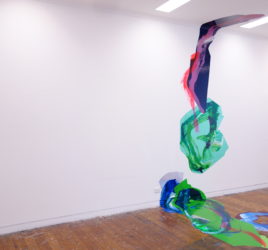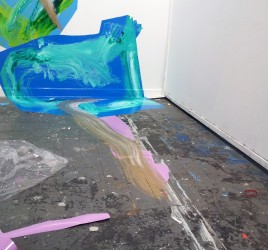Conducting a Site Assessment for Site Specific Artworks
My installations are site specific. That is, they are made to exist in specific places, and they respond to the elements and features of the site.
I have been refining how I approach a space. If my work is to respond to the site, I need to do a bit of research and thinking before I rock up to a site and slap some paint on the walls etc. That’s where a site investigation can be so helpful. I need to make notes all about the site and its features. It may also be helpful to document the space with photographs/video – which could help you to see what you wouldn’t normally notice.
When considering a space, think about:
- Light conditions: Is it dim, bright, dappled, changing, etc? Time of day, sunlight or artificial light?
- Shapes and forms present
- Floor level variances
- 360 degrees view
- Pay attention to your body as you walk through the site: this may be assisted by using ear plugs.
- Temporal nature of the space
- Site historical information
- Areas of transit: are there walkways through the space, etc?
- What people use the space? Who owns the space? Who has responsibility for the site?
- Interview someone about the site (user/owner/etc)
- Scale: How high are the ceilings, etc?
I’ve started work in a small space (see above photograph) with lots of elements to consider. Just briefly: It is a basic rectangular shaped room with a door and a window. The floor is tiled red and grey. The walls are white and feature two plaster walls and two masonry walls with the outlines of painted bricks/tiles on its surface. There are a number of clothing(?) hooks up high in the space, and a radiator in the centre of one wall. Light pours in from the window, and there is a small amount from fluorescent light overhead. There is no air movement unless the window is opened.
I often find the challenge is knowing what to utilise, what to ignore – and is it too obvious to draw varying levels of attention to a particular feature.
Stay tuned for developments to this installation.




